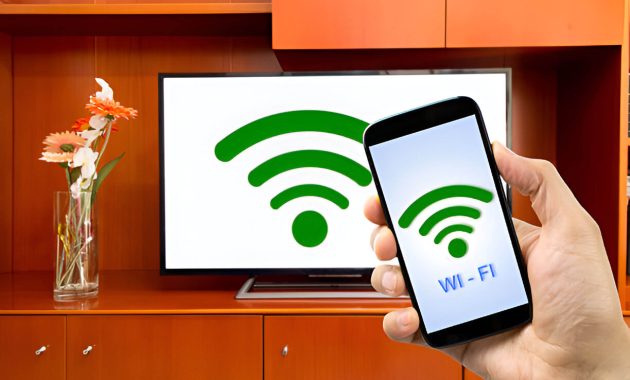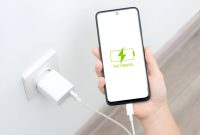In the age of digital connectivity, the ability to cast content from your phone to your TV has transformed our media consumption habits. This innovative technology bridges the gap between personal devices and larger screens, offering a seamless way to share photos, stream videos, and mirror displays. As we explore the various casting methods, requirements, and troubleshooting tips, we’ll uncover how this technology enhances our viewing experience and simplifies content sharing with friends and family.
What Is Casting and Why It’s Useful?
Casting, also known as screen mirroring or wireless display, is a technology that allows users to stream content from their mobile devices directly to their TV screens. This innovative feature has revolutionized how we consume media and share information in our homes and workplaces.
Casting enables seamless connectivity between your smartphone, tablet, or computer and your television. By leveraging your home’s Wi-Fi network, you can effortlessly project your device’s screen onto a larger display, enhancing your viewing experience and opening up a world of possibilities.
One of the primary benefits of casting your phone on TV is the ability to enjoy content on a much larger screen. Whether watching videos, browsing photos or presenting a slideshow, the increased display size can significantly improve visibility and engagement. This is particularly useful for family gatherings, work presentations, or simply when you want to relax and watch your favorite shows without straining your eyes on a small screen.
Moreover, casting eliminates the need for cumbersome cables and adapters, providing a clutter-free and more flexible viewing setup. It allows you to control the content from the comfort of your couch, using your mobile device as a remote control. This wireless freedom enhances the user experience and makes switching between different apps and content sources easier.
As technology evolves, casting has become integral to our digital lives, bridging the gap between our devices and home entertainment systems. Whether you’re a movie enthusiast, a casual gamer, or a professional looking for an efficient way to share information, understanding and utilizing casting can significantly enhance your digital experience.
Different Methods for Casting from Phone to TV
Several methods are available for casting content from your phone to your TV, each with advantages and compatibility requirements. Chromecast, developed by Google, is a popular option that allows users to stream content from various apps directly to their TVs using a small dongle. For Apple users, AirPlay offers seamless integration between iOS devices and Apple TV or compatible smart TVs. Miracast is a wireless display standard that works with many Android devices and Windows PCs, enabling screen mirroring without additional hardware. Samsung users can take advantage of Smart View, a proprietary technology that allows for easy screen sharing between Samsung phones and TVs. Numerous third-party screen-sharing apps are available on iOS and Android platforms, providing alternatives for users with different device combinations. When choosing a casting method, consider your devices’ compatibility, the content you wish to share, and the level of convenience you require for your setup.
Step-by-Step Guide Casting with Chromecast
Setting up and using Chromecast is a straightforward process dramatically enhancing your entertainment experience. Here’s a step-by-step guide to get you started:
- Install the Google Home app on your smartphone or tablet.
- Plug your Chromecast device into your TV’s HDMI port and power it on.
- Open the Google Home app and follow the prompts to set up your Chromecast.
- Ensure your Chromecast and mobile device are connected to the same Wi-Fi network.
- Open a Chromecast-compatible app like YouTube, Netflix, or Spotify.
- Look for the cast icon (usually in the top right corner) and tap it.
- Select your Chromecast device from the list to begin casting.
For optimal performance, keep your Chromecast updated and within range of your Wi-Fi router. If you encounter issues, try restarting your Chromecast or checking your Wi-Fi connection. Remember, not all apps are Chromecast-compatible, so verify compatibility before casting.
With these steps, you’ll quickly be able to enjoy your favorite content on the big screen. Happy casting!
Using AirPlay to Cast from iPhone to Apple TV
AirPlay is a powerful feature that allows iPhone users to seamlessly cast content to their Apple TV or other AirPlay-enabled devices. First, ensure your iPhone and Apple TV are connected to the same Wi-Fi network. On your iPhone, swipe from the top-right corner to access the Control Center, then tap the “Screen Mirroring” button. Select your Apple TV from the list of available devices, and your iPhone’s screen will instantly appear on your TV.
The latest version of AirPlay 2 offers enhanced features such as multi-room audio support and reduced latency. You can stream music to multiple AirPlay 2-compatible speakers throughout your home. Additionally, iOS screen mirroring allows you to display not just media but any app or content from your iPhone directly on your TV screen.
For optimal performance, ensure your Apple TV is appropriately set up and running the latest TVOS version. You can adjust AirPlay settings on your Apple TV by navigating to Settings > AirPlay and HomeKit. Here, you can customize options like requiring a password for AirPlay connections or allowing access only to devices on the same network.
Whether you’re sharing photos with family, presenting at a meeting, or enjoying your favorite apps on a larger screen, AirPlay provides a seamless and user-friendly solution for casting from your iPhone to Apple TV.
Casting to Smart TVs without Additional Hardware
Modern Smart TVs come equipped with built-in casting features, eliminating the need for additional hardware like Chromecast or Apple TV. These integrated systems allow users to stream content directly from their mobile devices or computers to their television screens.
Samsung’s Smart View technology enables users to mirror their smartphone or tablet display onto compatible Samsung TVs. This feature supports Android and iOS devices, making it versatile for various household gadgets.
LG’s webOS platform offers similar functionality, allowing users to cast content from their devices to LG Smart TVs. The user-friendly system supports a wide range of streaming apps and services.
Android TV, which is found in many Smart TV brands, includes Google Cast functionality. This feature lets users directly cast content from their Android devices or Chrome browsers to their TVs, providing a seamless viewing experience.
These built-in casting features simplify the streaming process, reduce clutter, and save money on additional devices. As Smart TV technology continues to evolve, we can expect even more intuitive and comprehensive casting options in the future.
Third-party apps for Casting to Any TV
Third-party apps have emerged as versatile solutions for casting content to various TV models, offering flexibility beyond built-in casting features. AllCast and LocalCast are popular options that provide universal casting capabilities across different devices and smart TV platforms.
AllCast stands out for its user-friendly interface and broad compatibility. It supports streaming from Android devices to a wide range of smart TVs, gaming consoles, and streaming devices. Users can easily cast photos, videos, and music stored on their phones or cloud services.
LocalCast offers similar functionality but with additional features for power users. It excels in handling various file formats and provides advanced playback controls. LocalCast also supports subtitles and allows for offline playback on some devices.
These screen mirroring apps serve as universal casting solutions, bridging the gap between different ecosystems. They’re handy for older smart TVs or when native casting options are limited. By installing these third-party apps, users can enhance their casting capabilities and enjoy a seamless content-sharing experience across multiple devices and platforms.
Troubleshooting Common Casting Issues
You may encounter casting issues when streaming content to your TV or other devices. Understanding how to address these problems can significantly improve your viewing experience. One of the most frequent issues is connection problems, which can often be resolved by ensuring your casting device and receiver are on the same Wi-Fi network. If the connection persists, try restarting both devices and your router.
Audio sync issues can be frustrating, but they’re usually fixable. Start by closing and reopening the streaming app, or try adjusting the audio delay settings on your TV or receiver. If the problem continues, check for available software updates for your devices.
Lag reduction is crucial for a smooth streaming experience. To minimize lag, consider using a wired Ethernet connection instead of Wi-Fi when possible. If you must use Wi-Fi, position your router closer to your devices and reduce interference from other electronic devices.
Network optimization can significantly enhance your casting performance. Prioritize your streaming device’s network traffic through your router settings, and consider upgrading your internet plan if you frequently experience buffering or quality issues. Additionally, limit the number of devices connected to your network while casting to ensure optimal bandwidth allocation.
Addressing these common casting issues can improve your devices’ seamless and enjoyable streaming experience.
Tips and Tricks to Improve Your Casting Experience

Enhancing your casting experience can significantly improve your entertainment setup. To optimize video quality, ensure a strong and stable Wi-Fi connection, and consider using an Ethernet cable for a direct connection to your router. Adjust your device’s display settings to match your TV’s capabilities for the best picture.
Lower screen brightness and close unnecessary background apps to reduce battery drain while casting. You can also enable power-saving mode on your smartphone or tablet to extend battery life during longer casting sessions.
Multi-room casting allows you to create an immersive audio experience throughout your home. Group compatible devices in your casting app to synchronize playback across multiple rooms, perfect for parties or moving from room to room.
Guest mode is a handy feature that allows visitors to cast content without connecting to your Wi-Fi network. Enable this option in your device settings to make it easy for friends and family to share their media while maintaining network security.
By implementing these tips and tricks, you can maximize your casting experience, enjoying seamless streaming and improved functionality across your devices.










